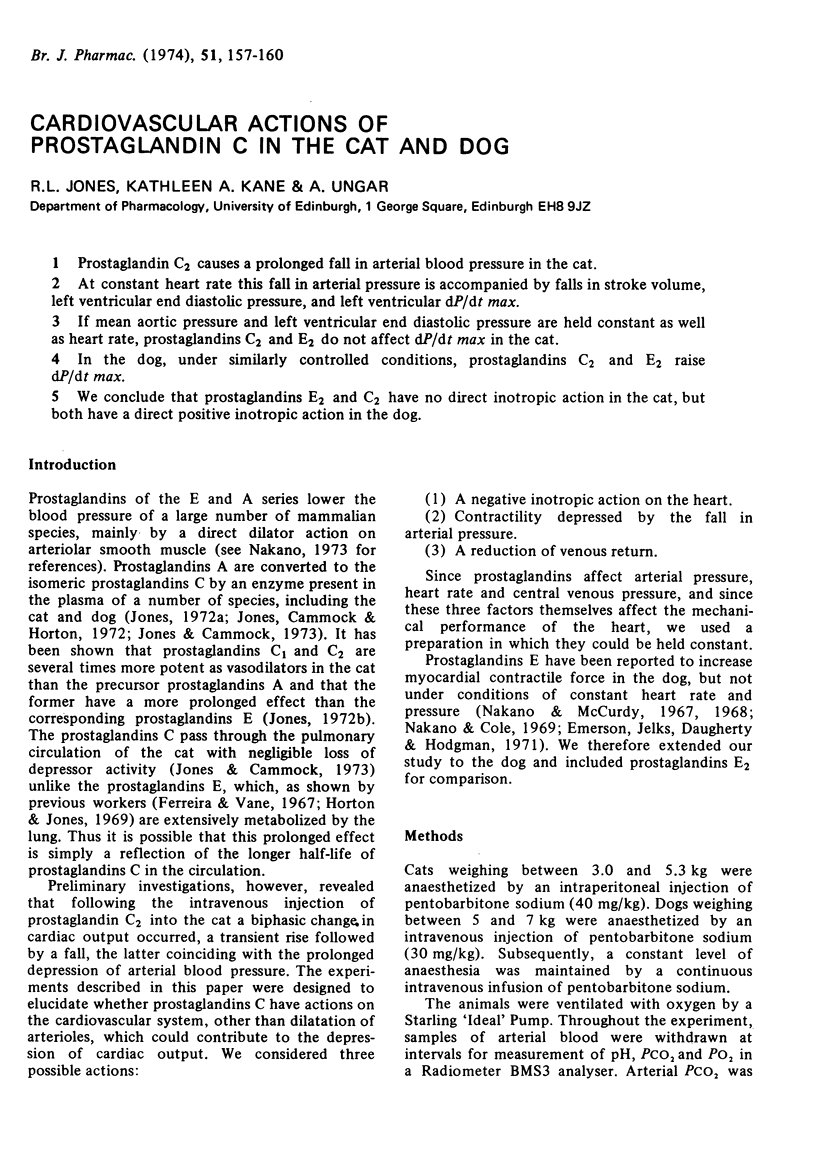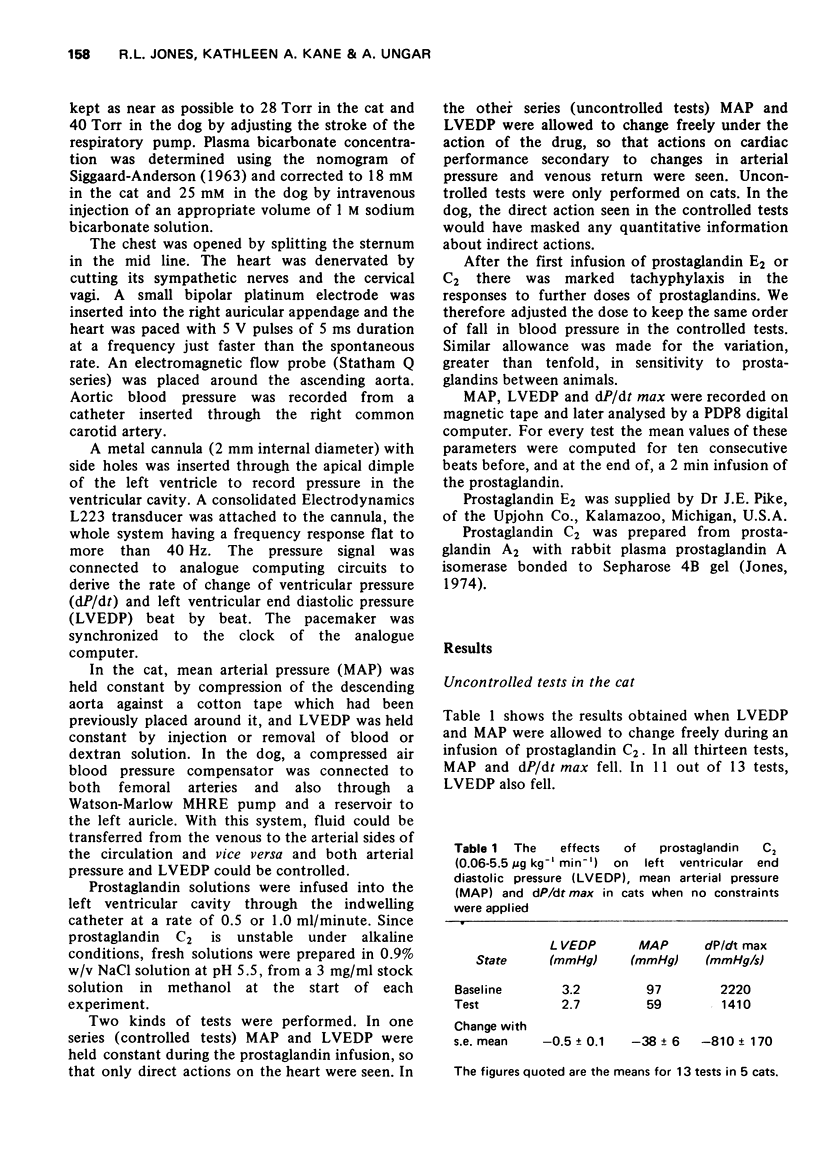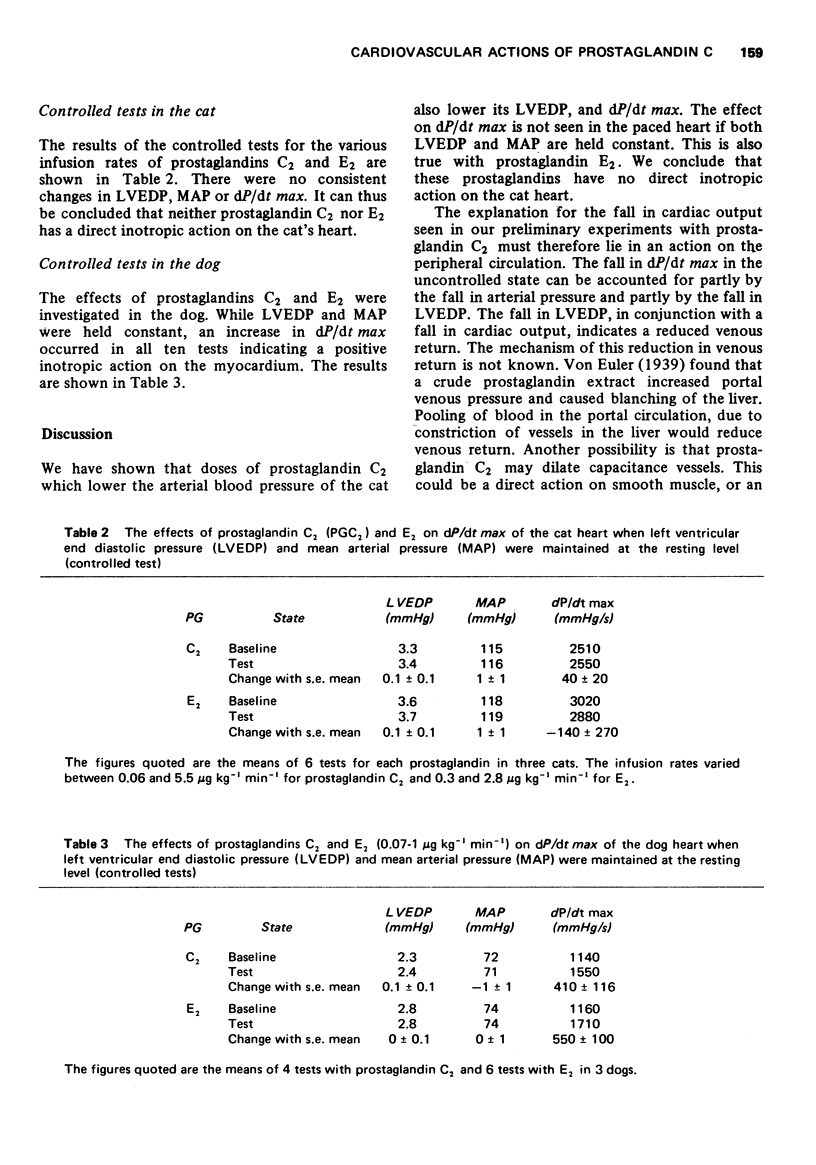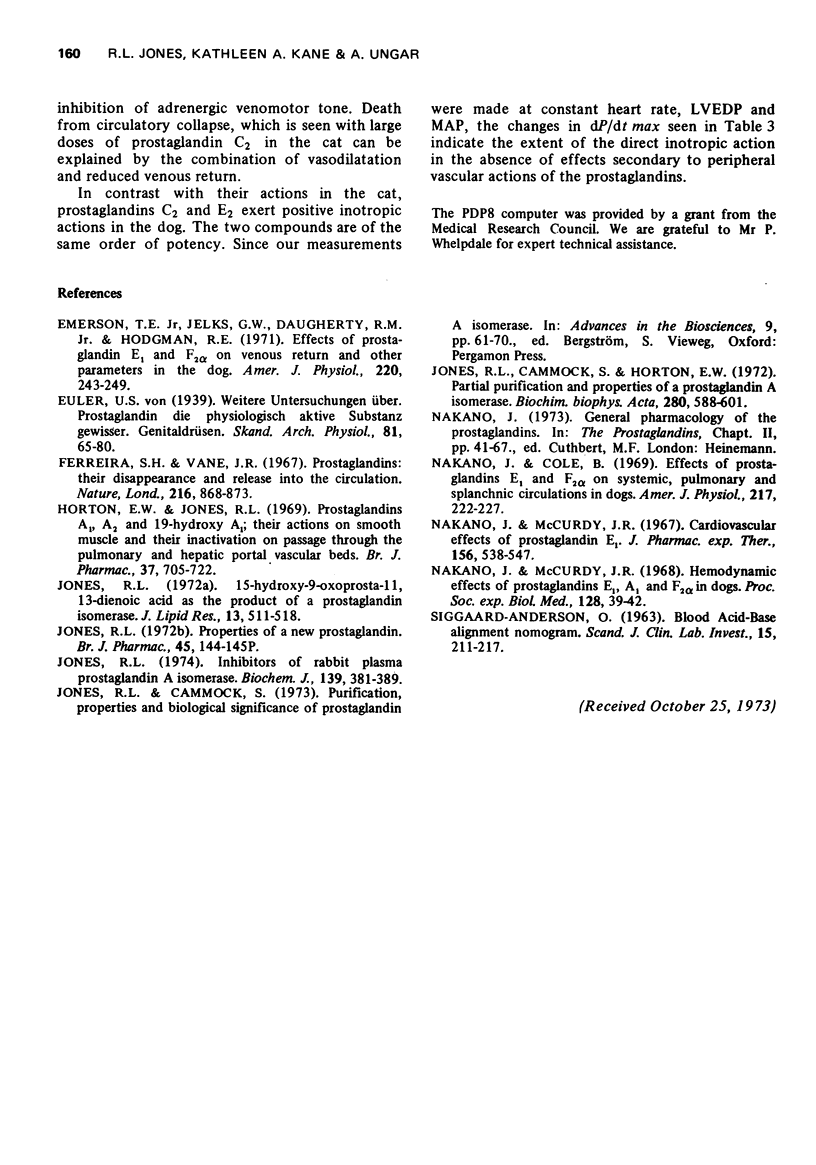Abstract
1 Prostaglandin C2 causes a prolonged fall in arterial blood pressure in the cat.
2 At constant heart rate this fall in arterial pressure is accompanied by falls in stroke volume, left ventricular end diastolic pressure, and left ventricular dP/dt max.
3 If mean aortic pressure and left ventricular end diastolic pressure are held constant as well as heart rate, prostaglandins C2 and E2 do not affect dP/dt max in the cat.
4 In the dog, under similarly controlled conditions, prostaglandins C2 and E2 raise dP/dt max.
5 We conclude that prostaglandins E2 and C2 have no direct inotropic action in the cat, but both have a direct positive inotropic action in the dog.
Full text
PDF



Selected References
These references are in PubMed. This may not be the complete list of references from this article.
- ANDERSEN O. S. Blood acid-base alignment nomogram. Scales for pH, pCO2 base excess of whole blood of different hemoglobin concentrations, plasma bicarbonate, and plasma total-CO2. Scand J Clin Lab Invest. 1963;15:211–217. doi: 10.3109/00365516309079734. [DOI] [PubMed] [Google Scholar]
- Emerson T. E., Jr, Jelks G. W., Daugherty R. M., Jr, Hodgman R. E. Effects of prostaglandin E1 and F2 alpha on venous return and other parameters in the dog. Am J Physiol. 1971 Jan;220(1):243–249. doi: 10.1152/ajplegacy.1971.220.1.243. [DOI] [PubMed] [Google Scholar]
- Ferreira S. H., Vane J. R. Prostaglandins: their disappearance from and release into the circulation. Nature. 1967 Dec 2;216(5118):868–873. doi: 10.1038/216868a0. [DOI] [PubMed] [Google Scholar]
- Horton E. W., Jones R. L. Prostaglandins A1,A2 and 19-hydroxy A1; their actions on smooth muscle and their inactivation on passage through the pulmonary and hepatic portal vascular beds. Br J Pharmacol. 1969 Nov;37(3):705–722. doi: 10.1111/j.1476-5381.1969.tb08509.x. [DOI] [PMC free article] [PubMed] [Google Scholar]
- Jones R. L. 15-hydroxy-9-oxoprosta-11, 13-dienoic acid as the product of a prostaglandin isomerase. J Lipid Res. 1972 Jul;13(4):511–518. [PubMed] [Google Scholar]
- Jones R. L., Cammock S., Horton E. W. Partial purification and properties of cat plasma prostaglandin A isomerase. Biochim Biophys Acta. 1972 Dec 8;280(4):588–601. doi: 10.1016/0005-2760(72)90139-7. [DOI] [PubMed] [Google Scholar]
- Jones R. L. Inhibitors of rabbit plasma prostaglandin A isomerase. Biochem J. 1974 May;139(2):381–389. doi: 10.1042/bj1390381. [DOI] [PMC free article] [PubMed] [Google Scholar]
- Jones R. L. Properties of a new prostaglandin. Br J Pharmacol. 1972 May;45(1):144P–145P. [PMC free article] [PubMed] [Google Scholar]
- Nakano J., Cole B. Effects of prostaglandins E1 and F2-alpha on systemic, pulmonary, and splanchnic circulations in dogs. Am J Physiol. 1969 Jul;217(1):222–227. doi: 10.1152/ajplegacy.1969.217.1.222. [DOI] [PubMed] [Google Scholar]
- Nakano J., McCurdy J. R. Cardiovascular effects of prostaglandin E1. J Pharmacol Exp Ther. 1967 Jun;156(3):538–547. [PubMed] [Google Scholar]
- Von Euler U. S. Weitere Untersuchungen ueber Prostaglandin, die physiologisch aktive Substanz gewisser Genitaldruesen. Skand Arch Physiol. 1939;81:65–80. [PubMed] [Google Scholar]


